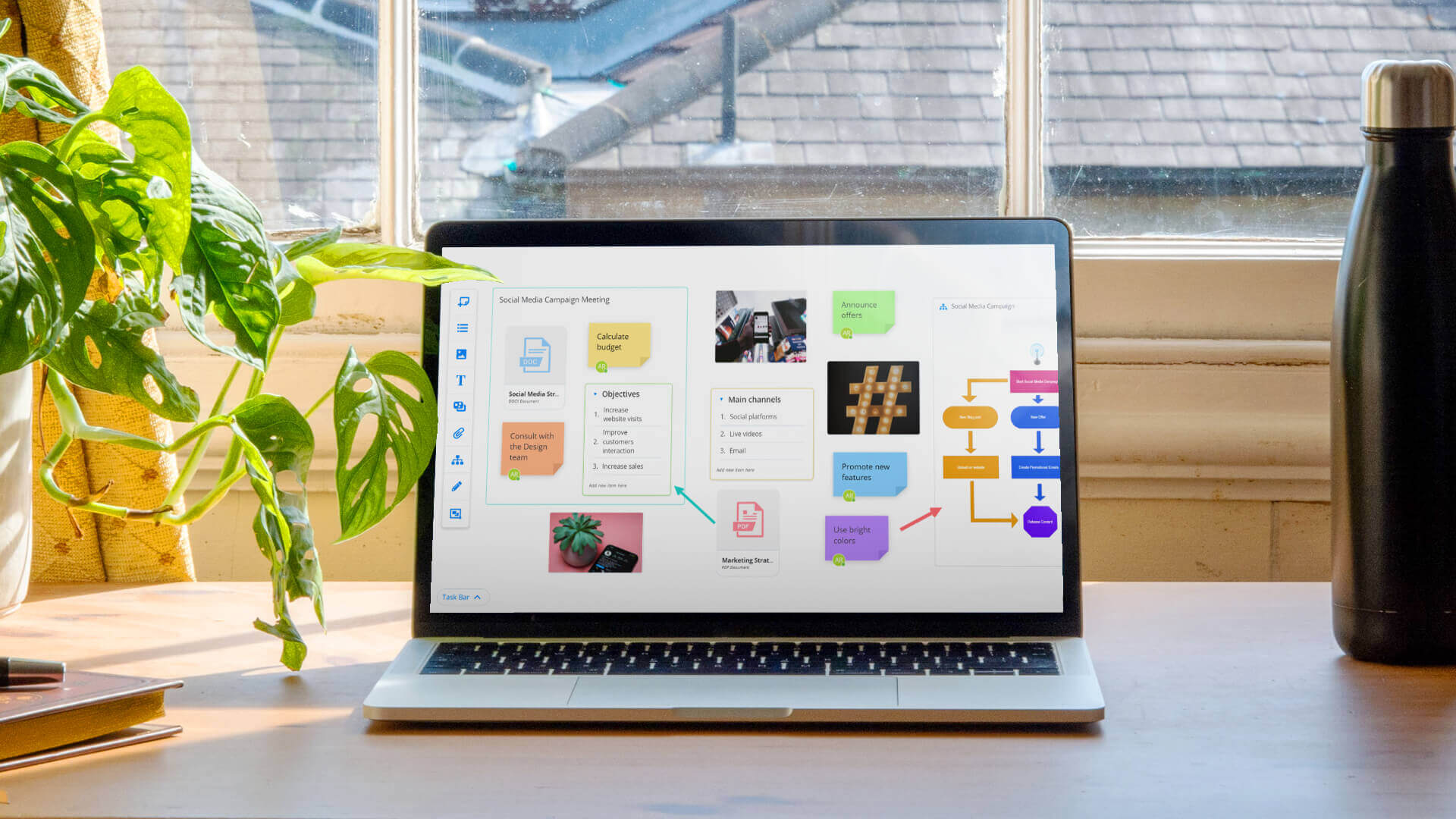December 29, 2020
5 brainstorming questions to help boost your creative thinking

Brainstorming sessions are a common exercise for many teams, and for good reason. They’re renowned for being an effective and easy way to collaborate with your team if you want to generate and discuss new ideas for your business, or even help to inform a new campaign or project. But with many teams now working remotely, collaborative brainstorming has become a challenge – and it can be difficult to keep your creative juices flowing when the dynamic of an energized room of people has been taken away.
As a result, we’ve all had to find new ways of conducting brainstorming sessions remotely. Here at Ayoa, we use our mind mapping tool to generate ideas individually before getting together as a group. Using a mind map means we can each take time to consider our own thoughts and ideas beforehand and contribute them to a shared map with our team. That way, we already have a starting point to work from to kick-start our discussions.
Once we’re ready to start a group brainstorm, we then use our built-in video meetings feature to chat directly within the app alongside our collaborative mind map. During the session, we can then discuss the ideas already added to the map and continue to build and expand upon these, so no idea gets forgotten.
But how can you make sure that you’re asking the right questions to generate the creative solutions you crave? See below 5 simple questions you can ask your team to help get your creative juices flowing.
Observational questions
Observational questions focus on the bigger picture and are usually a good place to start your brainstorming session. Typical observational questions can include:
“What goal are we trying to achieve?”
“What do you notice about our current processes?”
“What things stand out to you the most about ____?”
By considering these types of questions at the start of your brainstorm, it will get your participants in the right frame of mind. It also gives you a starting point to delve deeper into the details later.
Reflective questions
Reflective questions encourage each participant to consider their ‘gut feelings’ and emotions related to the topic at hand. This is a chance for your group to reflect on their positive experiences or any challenges they have faced that will help inform your discussion. Examples of reflective questions can include:
“What do you find easy about ____?”
“What do you find challenging about ____?”
By delving into these questions, it gives participants the chance to explore and discuss their feeling related to the topic at hand. It can help to reveal important information about their needs in regards to the topic. This can ultimately help inform your decisions later down the line when looking to assign tasks to specific team members.
Interpretive questions
Interpretive questions are your chance to explore the meaning, significance or implications of your discussion topic. These questions typically allow you to consider how things have been done in the past and if there are lessons that can be learned for moving forward. Some examples of interpretive questions can include:
“How did you feel about ____ in the past?”
“What do you feel we could have done better?”
Often, teams will begin their brainstorming sessions by asking these interpretive questions first, however, they are best suited towards the end of your discussion once you have discussed observations, goals and your group’s previous experiences and feelings.
Decisional questions
Once you have discussed all the information above, decisional questions will allow your group to consider what you will do next to action the information gathered. Typical decisional questions can include:
“What can we continue doing to achieve our goals and what do we need to start or stop?”
“What needs to be done by when?”
“What do we need to tackle first?”
Asking yourself these questions will ultimately help you to put action behind your discussions, so you can leave your brainstorming session with clear takeaways and steps in place to move forward.
Reverse brainstorming
If you’re looking to get the best ideas out of your team, reverse brainstorming is a really useful technique to tackle a topic or challenge from a different angle as it requires you to take your original problem statement and reverse it to trigger new ideas. So, for example, if your problem is ‘how can we generate more customers’, rephrase this to ‘how can we lose more customers?’.
Using this approach allows you to expand your creative thinking and consider your challenge from a completely new perspective. You’ll be surprised at how many interesting and unique ideas will come forward that you wouldn’t have considered before. Recognizing what you want to avoid will give you a better scope to find new market-driving alternatives to getting the results you want.
Top tip: Check out our reverse brainstorming canvas template to help you get started and put this useful thinking exercise into action!
Ready to make your remote brainstorming sessions more productive and creative than ever? Ayoa’s mind mapping, team collaboration and task management capabilities allow you to not only capture and develop ideas collectively but actually turn these ideas directly into tasks that you can manage from start to completion. Discover more here and sign up for FREE today.
